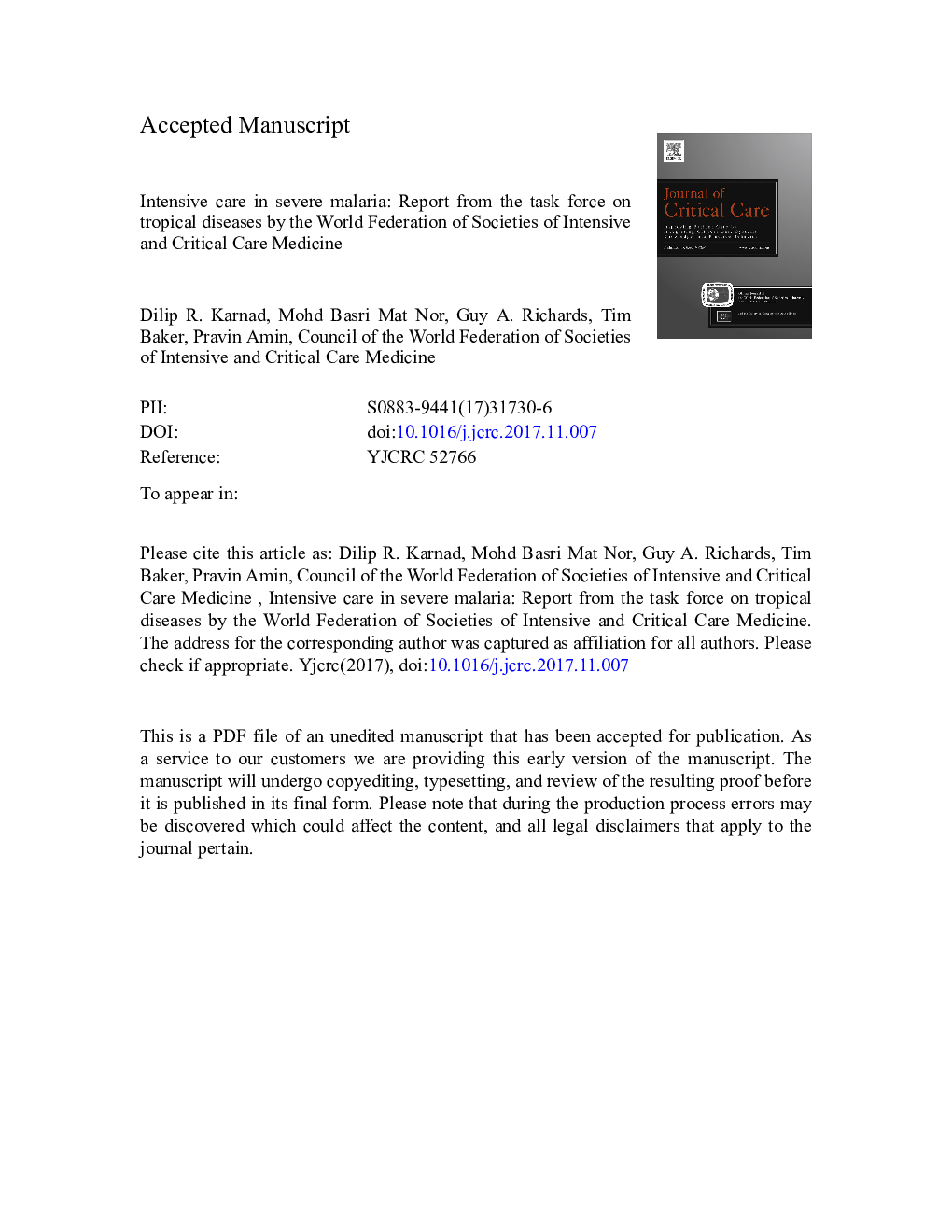| کد مقاله | کد نشریه | سال انتشار | مقاله انگلیسی | نسخه تمام متن |
|---|---|---|---|---|
| 8620508 | 1567669 | 2018 | 18 صفحه PDF | دانلود رایگان |
عنوان انگلیسی مقاله ISI
Intensive care in severe malaria: Report from the task force on tropical diseases by the World Federation of Societies of Intensive and Critical Care Medicine
ترجمه فارسی عنوان
مراقبتهای شدید در مالاریای شدید: گزارش کارگروه بیماریهای گرمسیری توسط فدراسیون جهانی انجمن های مراقبت ویژه و حیاتی
دانلود مقاله + سفارش ترجمه
دانلود مقاله ISI انگلیسی
رایگان برای ایرانیان
کلمات کلیدی
موضوعات مرتبط
علوم پزشکی و سلامت
پزشکی و دندانپزشکی
بیهوشی و پزشکی درد
چکیده انگلیسی
Severe malaria is common in tropical countries in Africa, Asia, Oceania and South and Central America. It may also occur in travelers returning from endemic areas. Plasmodium falciparum accounts for most cases, although P vivax is increasingly found to cause severe malaria in Asia. Cerebral malaria is common in children in Africa, manifests as coma and seizures, and has a high morbidity and mortality. In other regions, adults may also develop cerebral malaria but neurological sequelae in survivors are rare. Acute kidney injury, liver dysfunction, thrombocytopenia, disseminated intravascular coagulopathy (DIC) and acute respiratory distress syndrome (ARDS) are also common in severe malaria. Metabolic abnormalities include hypoglycemia, hyponatremia and lactic acidosis. Bacterial infection may coexist in patients presenting with shock or ARDS and this along with a high parasite load has a high mortality. Intravenous artesunate has replaced quinine as the antimalarial agent of choice. Critical care management as per severe sepsis is also applicable to severe malaria. Aggressive fluid boluses may not be appropriate in children. Blood transfusions may be required and treatment of seizures and raised intracranial pressure is important in cerebral malaria in children. Mortality in severe disease ranges from 8 to 30% despite treatment.
ناشر
Database: Elsevier - ScienceDirect (ساینس دایرکت)
Journal: Journal of Critical Care - Volume 43, February 2018, Pages 356-360
Journal: Journal of Critical Care - Volume 43, February 2018, Pages 356-360
نویسندگان
Dilip R. Karnad, Mohd Basri Mat Nor, Guy A. Richards, Tim Baker, Pravin Amin, Council of the World Federation of Societies of Intensive and Critical Care Medicine Council of the World Federation of Societies of Intensive and Critical Care Medicine,
